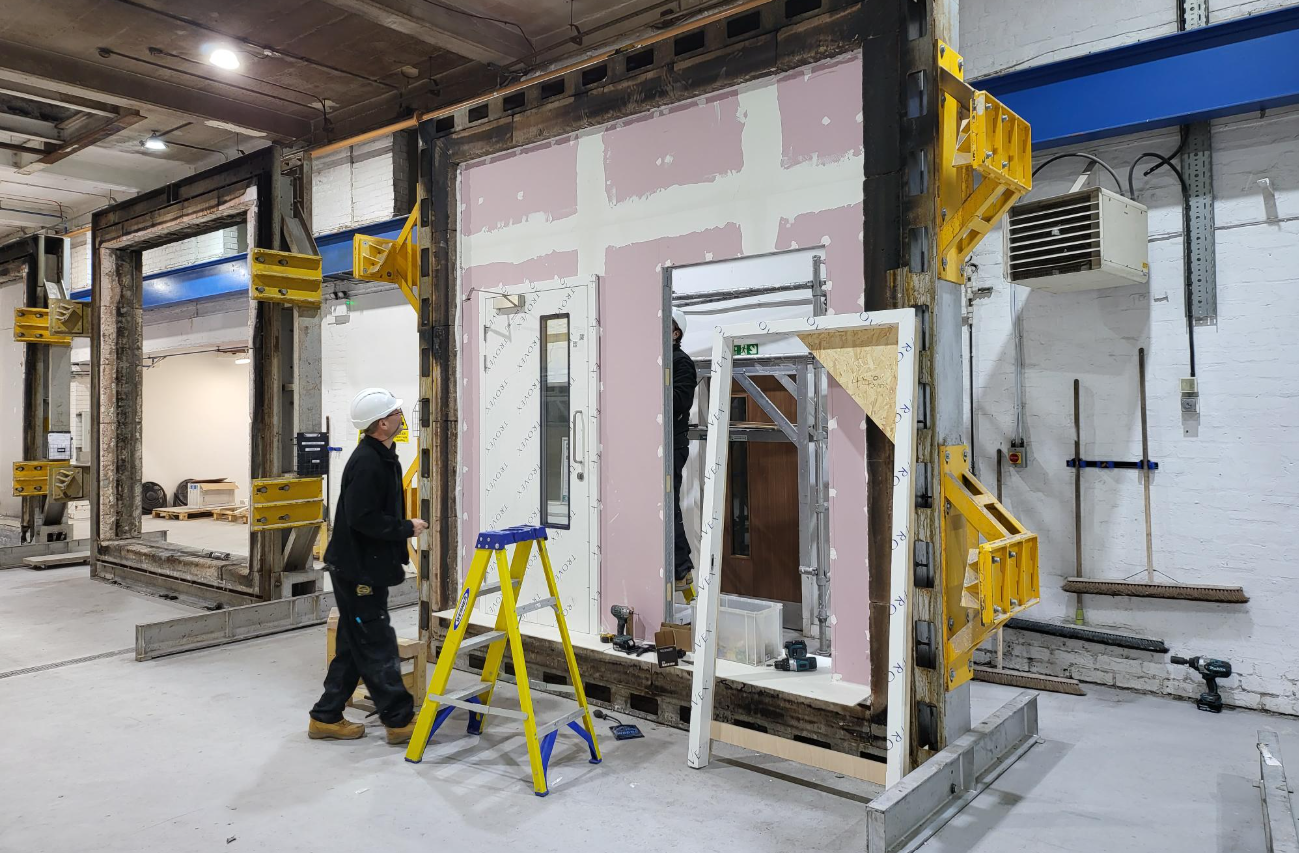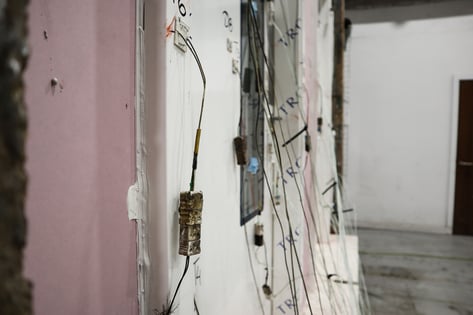Fire-door primary testing and fire-certification

Primary fire testing is essential to ensure that fire-rated doors and internal windows in healthcare environments perform effectively in emergency situations. Trovex’s Hygidoor fire-rated hygienic doors and Hygiscreen internal window systems have been tested to stringent European fire safety standards, delivering high-performance fire protection alongside exceptional hygiene and long-term durability.
With comprehensive installation guidelines and certified field of application reports, Trovex supports healthcare facilities in achieving full compliance with fire regulations, improving patient and staff safety, and investing in durable, low-maintenance systems built to last.
We caught up with Technical Lead, Mike Gardner and explored primary fire-testing, standards and Hygidoor further.

Mike, can you tell us a bit about your role and what primary fire-testing involves?
A: Absolutely. As Fire-Testing and Certification Lead, my job is to make sure our products, including Hygidoor and Hygiscreen, meet or exceed the most current fire safety standards. Primary fire-testing essentially puts the product through realistic fire scenarios in controlled lab conditions. We test for integrity, whether flames can pass through, and insulation, looking at heat transfer. It’s our way of ensuring that our products can stand up to the challenges they’d face in a real-world incident.
Q: Why is primary fire-testing so important, especially in healthcare settings?
A: Healthcare facilities are high-stakes environments. Many patients have limited mobility or rely on staff for evacuation. Primary fire-testing ensures that doors perform reliably under fire conditions, giving people more time to safely exit. It’s also key for compliance as regulations around fire safety are constantly evolving, and healthcare providers must demonstrate they’re meeting these standards.
Q: You’ve mentioned evolving regulations. How are we future-proofing our fire-doors?
A: One major way we future-proof is by conforming to the latest European standards, like BS EN1634-1, early in the design and testing process. By proactively meeting or exceeding these requirements, we minimise the risk of having to retrofit or replace doors if the regulations change. In other words, we’ve built forward-thinking design and testing methodologies right into the Hygidoor system.
Q: What makes Hygidoor stand out in terms of fire safety compliance?
A: Several things. Firstly, the Hygidoor has been rigorously tested under current European standards, so it’s certified for FD30 and FD60 ratings. We also produce clear and detailed installation guidance and field of application reports—which specify exactly how it needs to be installed should be used to ensure it meets its fire rating. Having that level of clarity means architects, contractors, and facility managers can trust the product to do its job, provided they follow those guidelines.

Q: Can you shed some light on these field of application reports?
A: Definitely. Field of application reports are essentially the ‘recipe book’ for how to achieve the stated fire resistance ratings. They show which hinges, locks, and closers can be used, the gap tolerances, the frame design, and any special installation requirements. If you deviate from those details—say you pick a different lock, you risk invalidating the entire fire certification.
Q: Why is the correct ironmongery package so critical for FD30 and FD60?
A: The door leaf itself is only one part of the equation. Each piece of ironmongery—hinges, locks, handles—must also be tested and proven to perform under fire conditions. If you swap a tested lock for an untested one, the heat transfer or air leakage characteristics change, and you can’t guarantee the door will maintain its integrity for the required time. That’s why we’re explicit about which packages have been tested and approved.
Q: Are there any additional benefits to choosing a future-proofed system like Hygidoor, aside from regulatory compliance?
A: Absolutely. Besides saving on potential retrofitting costs down the road, our Hygidoor system also excels in hygiene and durability—which are obviously key in healthcare. It features smooth, impact-resistant surfaces that are easy to clean and maintain. So, you’re essentially getting an all-in-one solution for both fire safety and infection control. Not to mention it integrates seamlessly with the wider Trovex range of products which include wall finishes, bed head trunking, ventilation concealment and more.
Q: What do healthcare facilities need to keep in mind when installing these doors?
A: First and foremost, always follow our installation guidance which conveys the requirements of the field of application reports. Use the correct hardware and ensure the installation team is trained and understands the guidelines. And then it’s about ongoing maintenance—regular checks to ensure seals are intact, hinges function properly, and closers work as they should. Overlooking maintenance can compromise the door’s performance during a fire.
Q: How do you see fire safety standards evolving, and how is Trovex preparing for that?
A: We’re likely to see even more stringent standards as new materials, design methods, and lessons learned from real incidents shape regulations. At Trovex, we’ve baked a culture of continuous improvement into our R&D process. We’re always re-evaluating our products, testing them under new conditions, and refining our designs to stay one step ahead. Our goal is to ensure our customers can rely on us for future-proof solutions—today and tomorrow.
If you have any questions or would like to explore how Hygidoor can support your fire safety and infection control needs, get in touch with the Trovex team.


